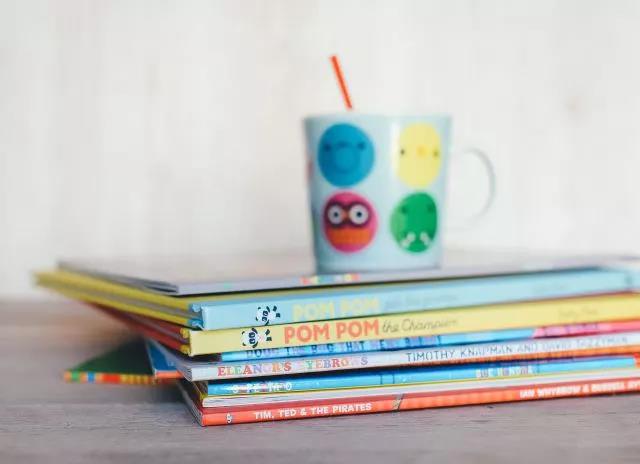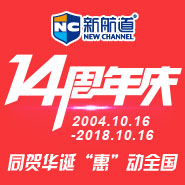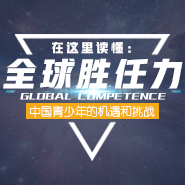2013年5月托福阅读材料二()
2013-04-27 00:00 供稿单位: 互联网
出国英语考试有哪些 雅思6.5是什么水平 雅思阅读评分标准 托福阅读评分标准 雅思和托福的区别
今天新航道托福频道小编为大家整理了2013年5月托福阅读材料,供大家参考,以下是详细内容。
谷歌眼镜迎来日本挑战者
日本企业家希望人们能通过别人的眼睛来看世界。不过他的款产品并不那么有野心,通过它看世界,整个世界看起来有点像日本卡通漫画。在我目前见过的处于研发阶段的产品中,这个名为“心电感应1号”的产品是最接近谷歌眼镜(Google Glass)的一款。本周二晚上,在纽约的一场活动上,井口尊然和他的团队向媒体展示了这款眼镜的原型机,它可以用来传送图像(其中两台是实物,其它几台是实物模型)。
像谷歌眼镜一样,用户可以把“心电感应1号”戴在头上,然后把眼镜腿挂在耳朵上。“心电感应1号”还配了一幅耳机,因此可以推测,未来它应该会在产品中添加音频功能。
与谷歌眼镜不同,“心电感应1号”在眼镜前方有一个光学投影的小屏幕,另一个人通过一款手机应用,可以将拍摄的图像传送到眼镜的小屏幕上,呈现在佩戴者眼前。“心电感应1号”团队表示,这款设备还可以通过眼镜直接拍摄照片或视频,然后把这些图像传输到另一个人的手机应用上,不过目前原型机上还没有这些功能。
井口尊然强调,他希望“心电感应1号”可以让用户跟所爱的人分享所见的景象。他说:“当你爱的人站在你旁边的时候,你会感觉到爱。”井口是几天前从东京飞到纽约的,他在演讲时,有一半的时间说英语,一半的时间说日语,有一位翻译在旁边帮忙。他解释说,“心电感应1号”的核心功能就是让身处两地的人们可以实时分享某种体验。他指出,这和谷歌眼镜可能使用的某些开放性的应用形成了鲜明对比。
“心电感应1号”将使用的款应用叫Manga Camara。这款应用在日本很流行,已经获得了600万次的下载量。演示过程中,我戴上了这副眼镜,然后“心灵感应1号”团队的人给我周围的人拍照,随后我眼前的小屏幕上就出现了这些人的日本漫画形象。
听起来是不是有点奇怪?呃,那是因为它本来就有点奇怪。
看着一群陌生人变成黑白漫画式的小人儿,可能不如看到好朋友或合作伙伴变成漫画人物更有喜感。另外这款原型机戴起来也不是很舒服,没有办法很清晰地欣赏图像。所以大多数试戴过这款设备的人不得不把它拿在手里,用一个尴尬的姿势往里瞄,几乎是眯着眼睛看里边的图像。
这种体验也说明了这款产品还处于研发阶段,而且还是非常早期的研发阶段。虽说“心电感应1号”团队打算在2013年圣诞节发布这款设备,不过可以说它离真正流行起来还有很远。他们现在还在挑选零部件供应商,而且按现在的研发进度,我们也无法给它预估一个价格(但它肯定比谷歌眼镜向开发者收取的费用要低),也没法预测它的电池寿命。“心电感应1号”团队还谈到了这款眼镜许多计划中的功能,比如计划通过声音、手势或触摸来控制界面等等(都是很难啃的骨头),但是这些功能还很遥不可及。
不过与此同时,我的确很喜欢“心电感应1号”的某些功能。比如它们选择了社交图像分享这样一个功能,而且试图把它做得非常简单,我认为这是他们很明智的一个决定。井口尊然把“心电感应1号”和谷歌眼镜比作苹果的iPod。它们创造了一个全新的产业类型,但在它们问世之前,人们根本不知道自己会想要这样一款产品。一款设备要想打开这种有难度的市场,需要一款杀手级应用,以塑造消费者的需求,赢得消费者的芳心。
“心电感应1号”严格来说并不对谷歌造成威胁。这个团队有8个人在开发这款设备,2013年1月他们才成立了公司。就像井口尊然在演示开始时对大家说的那样,他们向大家介绍的与其说是一款襁褓中的产品,还不如说是一款还没出娘胎的产品。这个团队上个月在影视音乐互动大会(SXSW)上介绍了他们的“心电感应1号”,下个月他们还会在硅谷与开发者们交流。
今年11月在旧金山举办的RoadMap大会上,我们还会谈到可佩戴产品和新的UI。如果您想获得我们赠送的批RoadMap大会门票(去年全部售光),
Japanese entrepreneur Takahito Iguchi wants people to see the world through other people’s eyes. But as a less ambitious jumping off point, he’ll kick it off with a world that looks like a Japanese manga cartoon. His device, called the Telepathy One, is the closest thing I’ve seen under development yet to Google’s Glass gadget, and at an event in New York City on Tuesday night, Iguchi and his team showed off prototypes (two working and several others just mockups) of the wearable image-streaming glasses to the media.
Like with Google Glass, users wear the Telepathy One on their heads, in front of the eye and wrapped around the ears. Telepathy actually has ear buds that fit into the ears, so you can presumably hear audio functionality when they add it in.
Unlike with Google Glass, the Telepathy One has an optically projected small screen in front of the eye of the wearer, and a cell phone app controlled by the partner captures the images that the wearer sees in a tiny screen. The Telepathy team said the device will also be able to take photos or videos from the headset and stream those images to the partner’s cell phone app, but the prototype didn’t yet have that functionality.
Iguchi emphasized that he wants the Telepathy One to enable users to share what they’re seeing with their loved ones. “You feel the love when your loved one is standing beside you,” said Iguchi, who flew in from Tokyo days before and half the time spoke to the group in English and half the time spoke in Japanese using an interpreter. The core functionality of the Telepathy One is the social sharing of experiences in real time between people over distance, explained Iguchi. He pointed out that this is in contrast to some of the more open-ended apps that will come out of Google Glass.
The first app that the Telepathy One will use is the Manga Camera app, which is a popular app in Japan that’s gotten 6 million downloads. For the demo, I put the headset on and the Telepathy team took photos of people around me, and the Manga-versions of those people streamed to the little projected screen in front of my eye.
Sound a little weird? Well, that’s because it was a little weird.
Seeing a bunch of strangers look like tiny black and white cartoons might not have the same type of pull as, say, seeing your best friend or partner as a goofy manga character. The prototype also wasn’t fitted comfortably enough to be able to see the image very well, so most people that tried the device on ended up holding it with their hand at a certain angle, looking up in an awkward manner, and practically squinting to see the image.
The experience is also telling of the stage of development of the product. It’s in a really early stage. While the Telepathy team is shooting for a Christmas 2013 launch for the device, it’s far — far — from prime time. They’re still sourcing suppliers for the components, and haven’t advanced enough to be able to give an estimated price on it (other than it’ll be cheaper than what Google is charging developers for Google Glass) or battery life time yet. There’s also a lot of planned functionality in the device that the team talked about but wasn’t even remotely there yet, like planned interfaces using audio, gesture, and touch (difficult things that are hard to get right).
At the same time, I do like some of the choices that the Telepathy team have made. In choosing one functionality (social image sharing only) and trying to make it really simple, I think they made smart decisions. Iguchi likened the Telepathy One and Google Glass to the iPods of the world trying to create an entirely new type of industry that people don’t know yet that they want. The device that can break through this type of difficult market will need to have one killer app to define the need and win people over.
The Telepathy One isn’t really a threat to Google. The team has 8 people working on the device, and formed the venture in January 2013. And as Iguchi said at the beginning of his talk while they’ve introduced their baby, it’s not really even born yet. The group introduced the Telepathy One at SXSW last month, and will be in Silicon Valley next month looking to connect with developers.
We’ll be talking about wearables and new UI’s at our RoadMap event in November in San Francisco.
以上是新航道托福频道小编为大家整理的2013年5月托福阅读材料,希望对大家有帮助,更多资讯、资料请访问新航道托福频道toefl/
- 上一篇: 2012年新托福阅读考情回顾与应对策略
- 下一篇:2013年5月托福阅读材料一()

- 新航道,英语成功之道。时间获取新航道英语学习资料和新鲜资讯,请在微信公众账号中搜索「新航道英语」或者「xhdenglish」,或用手机扫描左方二维码,即可获得新航道每日精华内容推送和英语学习经验分享,并参与新航道举办的各项活动。
精彩专题
更多视频荟萃
更多
-
120托福节之李老师:你的托福阅读领路人!
时长:01-18

-
120托福节之冉维:你的托福写作领路人!
时长:01-18
托福预测
更多
-
2017年托福听力考情分析及2018年备考建议
2017 年全年的48 场新托福考试已经落下帷...
- 2017年托福口语考情分析及2018年备考建议
- 2017年托福阅读考情分析及2018年备考建议
- 2017年托福写作考情分析及2018年备考建议(下)
- 2017年托福写作考情分析及2018年备考建议(上)









